The Kephart design blade is a proven performer. This latest Kephart from Bark River may prove to be the best version yet.
by Leon Pantenburg
I didn’t get a free knife for this review, I was not paid to write it and Bark River Knives didn’t have any input into this post. All I ever promise is a fair and impartial testing and review.
My wife is the most dispassionate knife tester I know. She is not a cutlery fanatic, is not particularly interested in the subject, and is used to various knives being cycled through the kitchen as part of the field testing. She uses test knives as needed and doesn’t give a rip about steel, handle materials or intended use.
But her take on the new Bark River® Kephart with the five-inch blade was immediate.
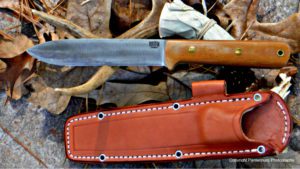
The Kephart comes with a sturdy leather sheath. This one was wet formed to fit the handle.
“That new (five-inch blade natural handle micarta Kephart) knife fits my hand very comfortably and slices really well,” she commented on the five-inch Kephart. “Let’s keep it.”
For the uninformed, the Kephart knife design is a tribute to famed outdoorsman and author Horace Kephart.
Kephart was a prolific writer and one of the pioneers of camping/outdoor skills. His outdoor writings were published regularly in national publications such as Field and Stream. Kephart’s first edition of Camping and Woodcraft was published in 1906. In it, Kephart described his EDC knife:
“Its blade and handle are each 4-1/4 inches long, the blade being 1 inch wide, 1/8 inch thick on the back, broad pointed, and continued through the handle as a hasp and riveted to it. It is tempered hard enough to cut green hardwood sticks, but soft enough so that when it strikes a knot or bone it will, if anything, turn rather than nick; then a whetstone soon puts it in order.”
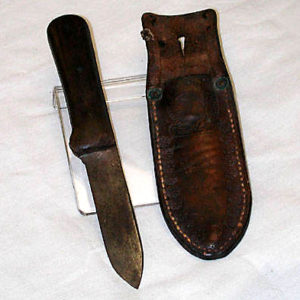
Horace Kephart’s original knife.
“The handle of this knife is of oval cross-section, long enough to give a good grip for the whole hand, and with no sharp edges to blister one’s hand. The handle is of light but hard wood, 3/4 inch thick at the butt and tapering to 1/2 inch forward, so as to enter the sheath easily and grip it tightly.”
Later, a five-inch Kephart was made and distributed by Colcesser Brothers, of Eldorado, Pennsylvania.
The BR five-inch Kephart came on the market a few months ago, and from the limited experience I’ve had with it so far, it’s already looking like a winner.
Here are the specifications:
| Overall Length: | 9.8″ |
| Blade Length: | 5.2″ |
| Blade Steel: | CPM 4V @ 60HRC |
| Blade Thickness: | .125″ |
| Weight: | 6.125oz. |
Here’s what I found out:
Handle: At 4.6 inches long, the handle meets my minimum requirement for a four-inch handle. It is large enough for a good hammer grip for my large hands, even when wearing gloves. When skinning big game animals or slicing meat, I frequently grip the handle and use an index finger or thumb on the spine. I will use a reverse hammer grip (spine down, edge up) to open up the abdominal cavity of a deer or elk. The Kephart handle design is proven to be very versatile and safe.
There are many handle materials to choose from, but for a user I want micarta. In my experience, micarta gets tacky when wet, resulting in a non-slip handle. I intend that this BR will be used a lot, so micarta it is.
Blade length: For overall use, I prefer a blade that is between four and five inches. That configuration is large enough to work hard, but small enough to be nimble in your hand. A blade that long will easily field dress a buck or whittle a feather or marsh mellow stick.
Blade thickness: In my experience, a thin blade slices, skins and generally performs better than a thicker one, and I choose a thin blade whenever there is an option. At .125-inch, the Kephart blade has plenty of vertical and lateral strength and it slices meat and tomatoes like a lazer. If I was looking for a fighting knife (Perish the thought!) I suppose a thicker blade would be in order.
But as it is, in nearly 50 years of backpacking, hunting, fishing and backcountry rambling, I have never broken a blade. With today’s quality steels, IMHO, there is no need for a thicker blade than about a 1/8-inch.
Steel: I have not used CPM4V before, but there was no sales resistance since I love CPM 3V, and have it in several BR blades. I trust BR’s steel selection and look forward to checking out the CPM4V.
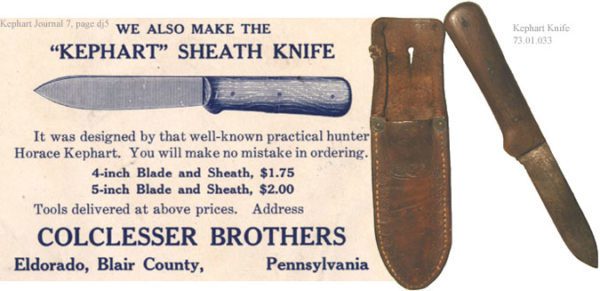
Original advertisement for the Kephart sheath knife
Sheath: A sturdy leather sheath comes with the Kephart. I wet formed mine, and added a D ring to make it a dangler.
Point: The Kephart’s spear point is one of the most useful, all-around points imaginable. It is a really good choice for a utility knife that is expected to do everything. A four-to-five-inch blade with a spear point is about perfect for that most common bushcrafting/survival/ hunting camp task – scraping the bottom of the peanutbutter jar.
Grind: All BRs are convex ground, and IMHO, convex is the best grind, hands down. There is no mystery to resharpening a convex edge.
Warranty: BR’s unconditional, 100 percent satisfaction-guaranteed warranty is legendary. Basically, if anything ever goes wrong with a BR knife, no matter if you bought it new, or salvaged it from a creek or house fire, BR will fix it. That includes the sheath. BR could not afford to have this kind of warranty if they didn’t produce a quality product.
Any if there is an issue with a knife, you can call the factory and a pleasant person with a midwestern accent will answer the phone and help you out.
Made in the USA: BR knives are made by American craftspeople in Escanoba, Michigan. The company and employees pay local, state and federal taxes, and BR has a well-earned reputation for community involvement. If you have a problem with a knife, you can probably talk to the person who made it. (See “warranty.”)
There are many quality Kephart-design knives on the market. (I have used the Kephart-design Genesis extensively, and it is one of my go-to, do-everything knives.)
Based on my experience with BR and the Kephart design, this latest interpretation is definitely going to be a contender for that mythical, do-it-all, best all-around knife!
Order this knife here.
Please click here to check out and subscribe to the SurvivalCommonSense.com YouTube channel – thanks!



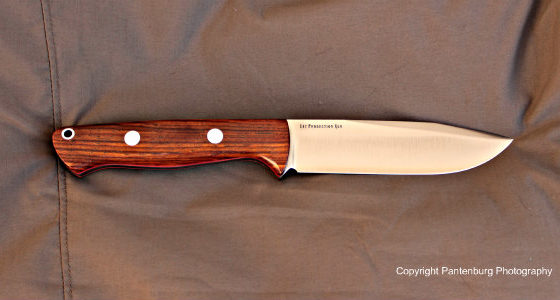
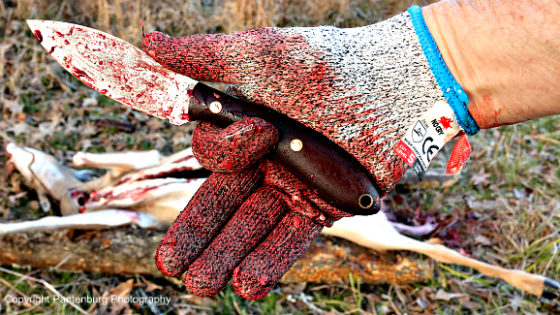
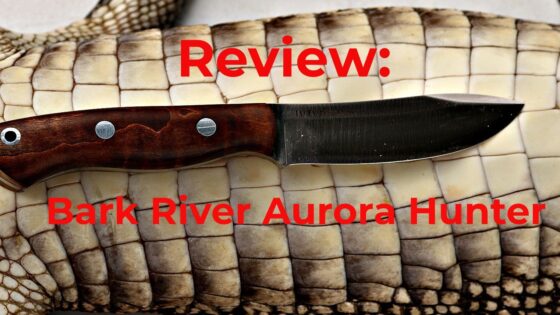
Leave a Reply